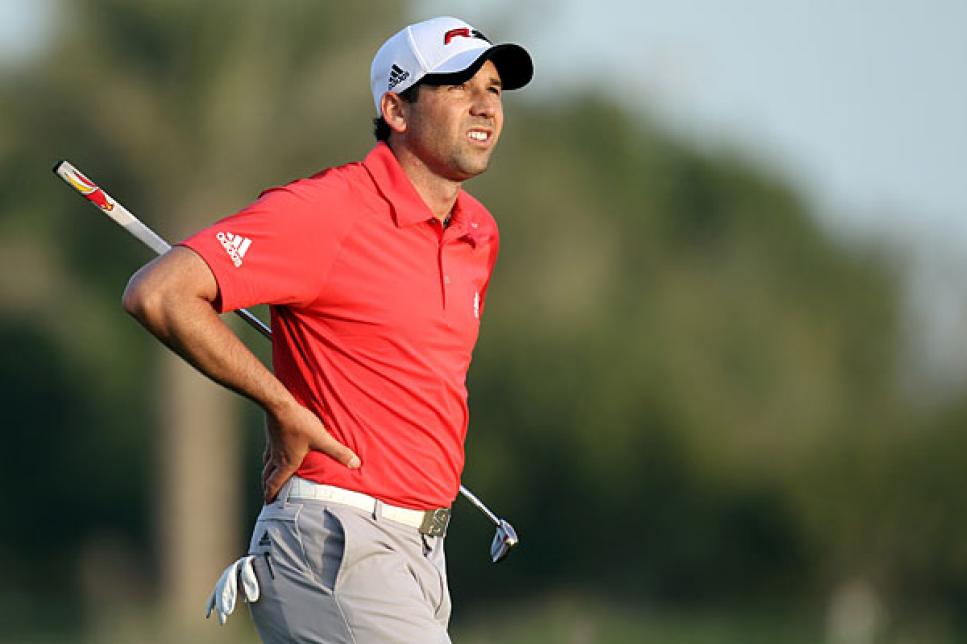News
Test Run

Sergio Garcia is one of the players in this week's field hoping to get an edge for the U.S. Open.
Seaside golf courses are fickle beasts, as predictable as a roulette wheel, often changing not just by the season but literally minute by the minute. This is particularly true of the Pebble Beach Golf Links, the site of this week's AT&T Pebble Beach National Pro-Am, and the host this June of the U.S. Open. Some of the vagaries of the Monterey Peninsula are more predictable than others, however. The "Crosby Weather" of February, with its occasionally monsoonal downpours, will be replaced by the wind and, potentially, cool fog of summer. Barring an onslaught of bad weather, the golf course and its tiny, sloped greens will, in all probability, be much firmer and much faster. But, just because Pebble will be a different test in the summer than it is in the winter, doesn't mean it won't reveal some of it's secrets to those who come early to seek them out.
"Where possible, we tried to move the fairways up against the ocean," says the USGA's Mike Davis who's responsible for the course set up later this year. "Six would be an example. If you were a good player, there was no way you were going to hit it in the ocean off the teeing ground. But the way that hole used to play, the fairway went right to the ocean. The ninth hole down at the bottom of the hill was that way. The eighth drive zone was much closer to the ocean. That was a theme I had, wanting to get things up against the ocean. The fairway lines for the most part are done. They are going to be able to see the sight lines. What a player would get out of playing this year at Pebble Beach that he would not have gotten last year is he's going to stand on certain holes and say, OK, I see what they're going to do."
Sergio Garcia, who hadn't played Pebble Beach since 2001, is one of the players who decided an early look would be worth the trip. "If we get decent weather the course will play a little bit different," acknowledges Garcia of the return trip in June. "But, yeah, the looks and some of the shots are still the same. So, you do get a feel. You get a feel of how the wind is playing and you've played it before and you know what the ball is doing. There's definitely some things you can take away from it."
Brad Faxon will be in the U.S. Open one way or the other, either as a participant or as a commentator for NBC television. "Every time you come here, you learn something about the course, and especially since the last U.S. Open," says Faxon, referring to Tiger Woods' historic 15-shot romp in 2000. "You will see different lines off the tees on eight and eleven. We have seen a few added bunkers on holes like two. Fourteen is a huge difference now. That's become a very tough driving hole and a hole you used to just hit it as hard as you can."
Of course, while Faxon embraced most of the changes, not all are necessarily created equal. The addition of the bunkers to the landing area on the third hole is an example. "I always thought if you drove it through the fairway on three and you had a flier lie to go into that pin, you had no chance," he says. "Our players have a better chance of stopping the ball out of the fairway bunker."
The Englishman Luke Donald wanted to squeeze in a couple of Pebble Beach preparatory rounds, but for more practical reasons. "Usually I try to come out the week before a major and play a little bit but I think, with my wife expecting a baby end of March, I probably won't be able to do that," says Donald, one of seven players currently in the Top 30 of the world rankings at Pebble Beach this week. "So, this was a good time to come out and see the course, hopefully have a good week and leave here with some good feelings."